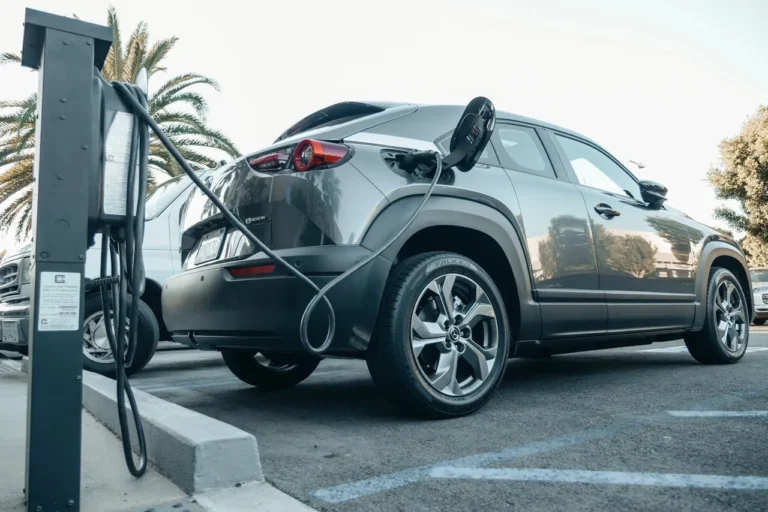
Ford’s $5 Billion U.S. EV Push: Innovation, Efficiency, and a New Midsize Electric Truck
Ford Motor Company is charting a bold new course in electric vehicle (EV) engineering and manufacturing, unveiling a sweeping strategy to deliver an all-new family of affordable, high-quality EVs to customers worldwide.
At the heart of this strategy are two transformative developments announced today: the Ford Universal EV Platform and the Ford Universal EV Production System. These advancements combine Ford’s 122 years of manufacturing expertise with the agility and inventive thinking of a California-based EV “skunkworks” team that approaches problems from first principles. The outcome is a highly efficient, flexible, and scalable ecosystem designed to produce EVs that are as cost-efficient as they are exciting to own and drive.
The first vehicle born from this approach will be a midsize, four-door electric pickup, set to roll out of Ford’s Louisville Assembly Plant for U.S. and global markets in 2027.
A Radical Approach to Affordable EVs
Ford President and CEO Jim Farley explained that the project’s mission was both ambitious and uncompromising:
“We took a radical approach to a very hard challenge: Create affordable vehicles that delight customers in every way that matters – design, innovation, flexibility, space, driving pleasure, and cost of ownership – and do it with American workers.”
Farley acknowledged the checkered history of Detroit automakers’ attempts at affordable vehicles, which too often ended in idled plants and layoffs. This time, the plan was different. Ford started from a blank slate—rethinking the moving assembly line, empowering a small, autonomous design team far from Detroit, and committing to domestic battery production.
In a key milestone, Ford is set to become the first automaker to build prismatic lithium iron phosphate (LFP) batteries in the U.S., a move that will help cut costs while improving durability and sustainability.
The Ford Universal EV Platform: Fewer Parts, More Efficiency
The numbers highlight the platform’s efficiency gains:
- 20% fewer parts compared to typical vehicles
- 25% fewer fasteners
- 40% fewer workstations from dock to dock in the plant
- 15% faster assembly time
- Lower five-year ownership costs than a three-year-old used Tesla Model Y
These gains extend to specific components. For instance, the midsize truck’s wiring harness is over 4,000 feet shorter and 10 kilograms lighter than the one in Ford’s first-generation electric SUV.
The cobalt-free, nickel-free LFP battery pack is a structural sub-assembly, doubling as the vehicle’s floor. This integration lowers the center of gravity, enhances handling, reduces noise, and frees up interior space. Combined with its packaging advantages, the new truck is expected to offer more passenger room than a Toyota RAV4, plus additional storage in both the frunk and truck bed.
Owners can even lock items like surfboards inside the bed without relying on roof racks or trailer-mounted carriers.
But practicality is only part of the story. Thanks to the low center of gravity, instant torque, and precision chassis tuning, the truck is designed to be genuinely fun to drive—targeting 0–60 mph times comparable to a Mustang EcoBoost, along with improved downforce for stability.
Doug Field, Ford’s Chief EV, Digital, and Design Officer, emphasized that this vehicle is no stripped-down budget model:
“We took inspiration from the Model T – the universal car that changed the world. Our new zonal electric architecture unlocks capabilities the industry has never seen. We applied first-principles engineering, pushing the limits of physics to make it fun to drive and competitive on affordability.”
Further details—such as price, range, battery sizes, and charging times—will be announced closer to launch.
The Ford Universal EV Production System: From Assembly Line to Assembly Tree
Ford’s manufacturing overhaul is just as radical as its vehicle design. The company is replacing the traditional linear assembly line with a more flexible “assembly tree” system.
Instead of moving a vehicle down one long conveyor, three major sub-assemblies are built in parallel:
- Front section – made with large aluminum unicastings to replace dozens of smaller parts
- Rear section – also built using large unicastings for structural strength and efficiency
- Structural battery assembly – complete with seats, consoles, and carpeting before integration
Once complete, these three sections are joined together to form the finished vehicle.
Every part arrives in a pre-prepared kit for operators, including all required fasteners, tools, and scanners, oriented for immediate use. This reduces wasted motion, improves ergonomics, and speeds up production.
Thanks to the integration between the new platform and production system, building the midsize truck could be up to 40% faster than Ford’s current Louisville Assembly Plant output. Even after reinvesting some of that time into insourcing and quality-focused automation, the plant is still expected to achieve a net 15% speed improvement.
Bryce Currie, Ford’s Vice President of Americas Manufacturing, noted:
We put our employees at the center and re-created the factory from scratch. Ergonomic breakthroughs and complexity reduction—by cutting parts, connectors, and wiring—will translate into major quality and cost gains.
$5 Billion in U.S. Manufacturing Investments
Ford’s plans involve significant investments to strengthen U.S. manufacturing. Nearly $2 billion will be invested in the Louisville Assembly Plant to prepare it for midsize electric truck production, securing 2,200 hourly jobs. The project is backed by incentives from the Kentucky Economic Development Finance Authority.
Kentucky Governor Andy Beshear celebrated the news:
This is one of the largest investments in our state’s history and cements Kentucky’s role at the heart of EV innovation. Ford and Kentucky have been a tremendous team for over a century, and that partnership has never been stronger.
The Louisville facility will expand by 52,000 square feet to improve material flow, and digital upgrades will give it the fastest network and most access points of any Ford plant worldwide, allowing for more frequent quality checks.
This investment complements Ford’s earlier $3 billion investment in BlueOval Battery Park Michigan, which will produce the prismatic LFP batteries starting next year. Combined, these projects represent about $5 billion in total investment and will support or create nearly 4,000 direct jobs across the two sites, while also strengthening domestic supply chains with dozens of new U.S.-based suppliers.
A Foundation for Ford’s EV Future
With the Universal EV Platform and Production System, Ford is aiming to reset the expectations for what an affordable EV can be—balancing cost, performance, space, and driving enjoyment while manufacturing at scale in the U.S.
By combining innovative engineering, ergonomic production, and strategic domestic investment, the company is positioning itself not just to compete in the EV market, but to lead it—delivering vehicles that are as practical as they are exciting.
The 2027 midsize electric truck will be the first proof point, but the architecture is designed for a full family of future EVs. If Ford’s vision plays out as intended, this could mark a turning point—not only for Ford, but for the broader U.S. automotive industry’s shift to electric mobility.






